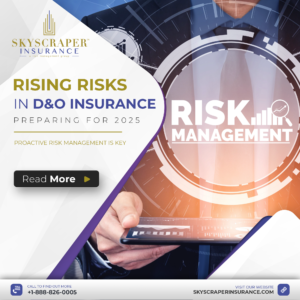Well-reported incidents of rioting nationwide have resulted in extensive damage to business premises, inventory and other property. In addition, government-instituted curfews or shutdown orders have interrupted businesses, causing commercial enterprises to lose income.
Many managers assume their insurance policies exclude riot-caused damage. Typically, this is not the case. Insurance coverage for property damage and lost income due to riots or civil commotion should be available under most commercial property insurance and business owner insurance policies. Absent special exclusions, these forms of property insurance provide coverage for a variety of losses, including destruction to store fronts and interiors, broken windows, stolen property, graffiti damage and, in most cases, the cost of debris removal.
In addition to property damage coverage, businesses forced to close as a result of riot damage may have coverage for business interruption. Lost income because of the closure of a property that accepts products or services of the policyholder, or that attracts customers to the policyholder’s business, may also be covered under dependent properties or contingent business extensions of coverage. Likewise, lost income as a result of curfews should be available under the civil authority extension of coverage. While insurance companies so far have resisted paying for losses resulting from the coronavirus, business interruption caused by physical damage to property during riots is in a more conventional, and thus clearer, category of coverage.
Typical commercial policies contain coverage limitations, however. Many require a “waiting period” of 72 hours before a policyholder can begin claiming the benefits of coverage. The first three days of business shutdown, constraint of access by barricade, or limited operation because of other civil authority, such as curfews that shorten business use or hours, usually are excluded from coverage. Policies also might limit interruption coverage to short durations of, for example, three consecutive weeks of loss.
Insurers might assert several exclusions. They would, of course, impose any policy limitations on riot or civil commotion. Additionally, some might try to assert a terrorism exclusion. Moreover, for damaged buildings empty for more than 60 days, insurers might raise vacancy exclusions — most notably, an exclusion for vandalism. Finally, insurers might assert overlapping virus exclusions as a bar to full loss-of-use restrictions from rioting.
Policyholders considering coverage should take the following steps:
- Review the policy. Analyze coverage and applicable exclusions. An experienced coverage lawyer can help harmonize competing claims and exclusion, especially the complicated area of business interruption losses.
- Track all damage, expenses and lost income. Insurers will require detailed proof of loss early in a business interruption or property damage claim. Policyholders should consider setting up a separate accounting code to document insured losses.
- Mitigate damage. Policyholders should take reasonable steps to reduce damages — including installing new doors and windows (or boarding up windows). Damages enhanced by inattention at the site can be limited.
8 things to know in the wake of civil disorders
Following days of riots and protests in cities and towns across the country in the wake of George Floyd’s death, there are many questions concerning insurance coverage, how to manage the risks and what other factors business and property owners should address in the aftermath.
According to the Insurance Information Institute website, there is a cost to these events. Before the riots in Minneapolis and other areas (for which numbers are not yet available), the most expensive civil disorder events occurred from April 29 through May 4, 1992, in Los Angeles, following the acquittal of the police officers involved with the arrest and beating of Rodney King. Property Claims Services (PCS), a unit of Verisk Analytics, found that the riots and looting caused $775 million in insured losses.
More recently, there were $24 million in insured losses following the civil unrest that occurred in Baltimore, Maryland, in 2015 following the death of Freddie Gray, who died while in police custody after he suffered a spinal cord injury.
The slide show above highlights eight factors to consider or actions to take in the wake of civil disorders.




